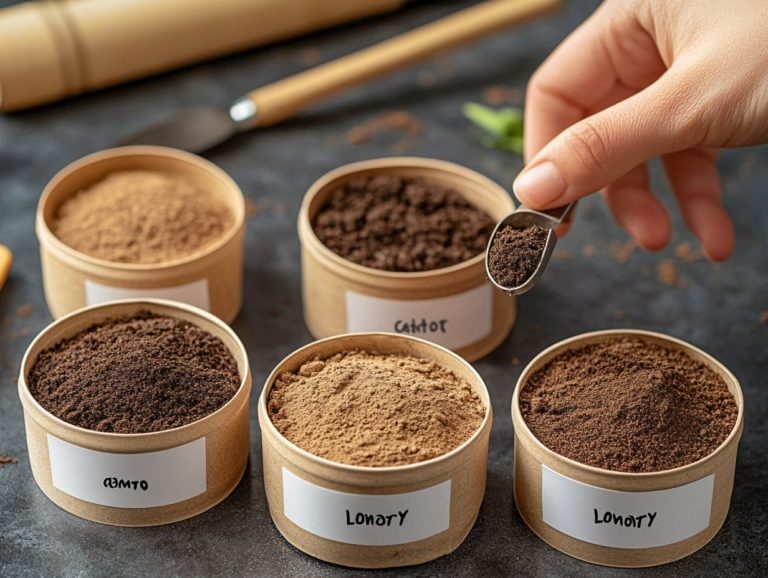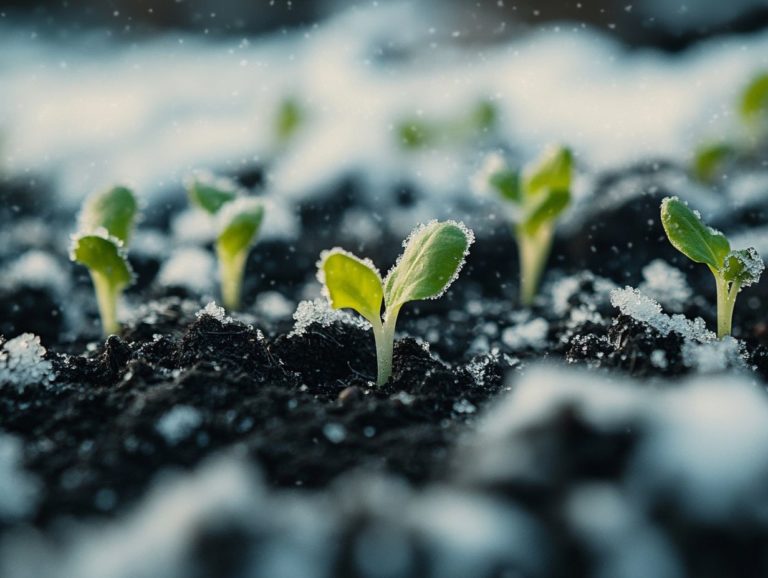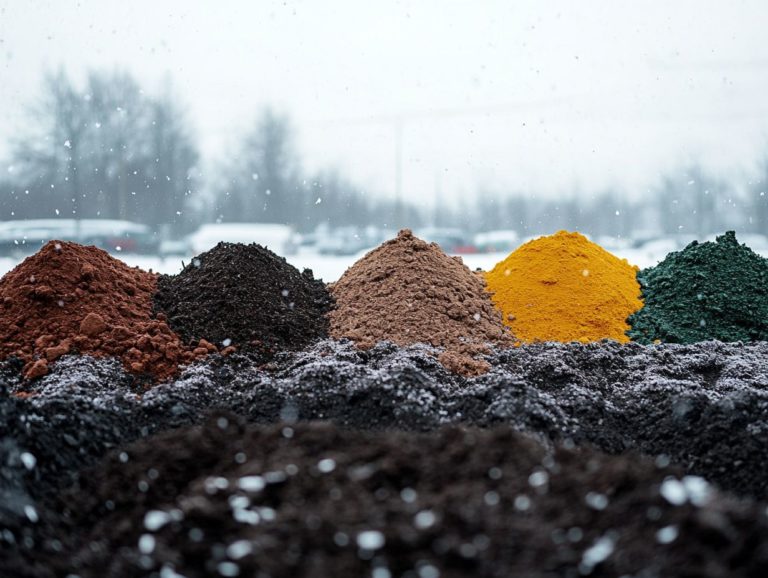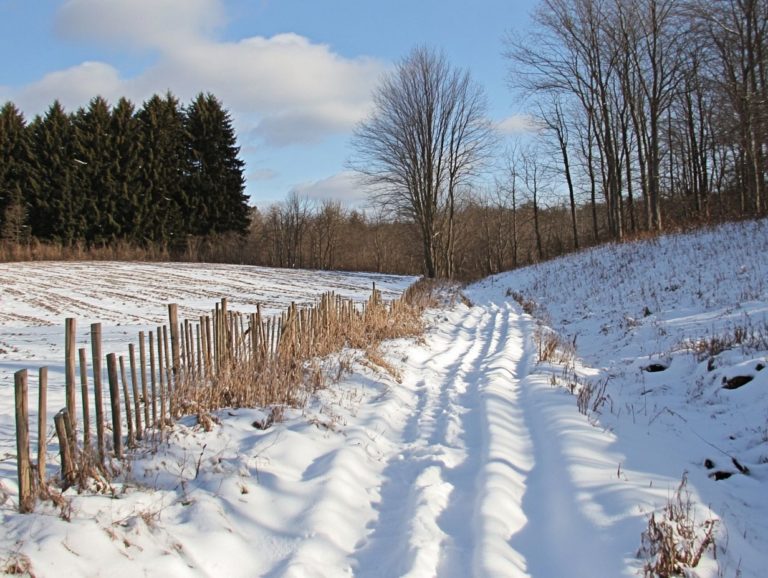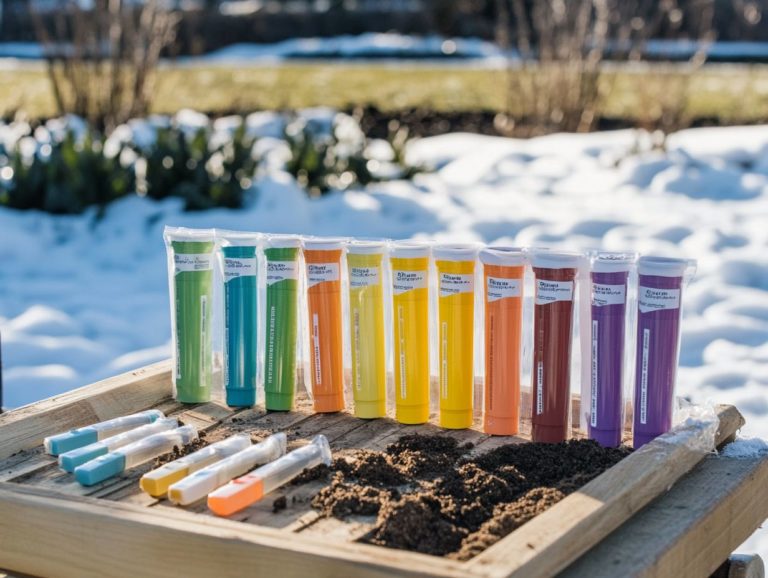Improving Soil Structure for Cold-Weather Gardens
In cold-weather gardening, cultivating healthy soil structure is vital for ensuring your plants thrive. Knowing how soil helps your plants grow is key to success, especially in challenging climates.
This article explores signs of poor soil structure, factors that affect it, and effective techniques to improve it. From amending your soil with organic matter to embracing no-till methods, you’ll discover best practices for maintaining optimal soil health. This will help your garden flourish even amid winter’s chill.
Contents
- Key Takeaways:
- The Importance of Soil Structure in Cold-Weather Gardens
- Signs of Poor Soil Structure
- Factors Affecting Soil Structure
- Techniques for Improving Soil Structure
- Best Practices for Maintaining Healthy Soil Structure
- Choosing the Right Plants for Your Soil
- Frequently Asked Questions
- 1. What are the benefits of improving soil structure for cold-weather gardens?
- 2. How can I improve soil structure for my cold-weather garden?
- 3. Is it necessary to improve soil structure for a cold-weather garden?
- 4. Can I use chemicals to improve soil structure instead of organic matter?
- 5. When is the best time to improve soil structure for a cold-weather garden?
- 6. How long does it take to see the results of improved soil structure?
- Frequently Asked Questions
Key Takeaways:
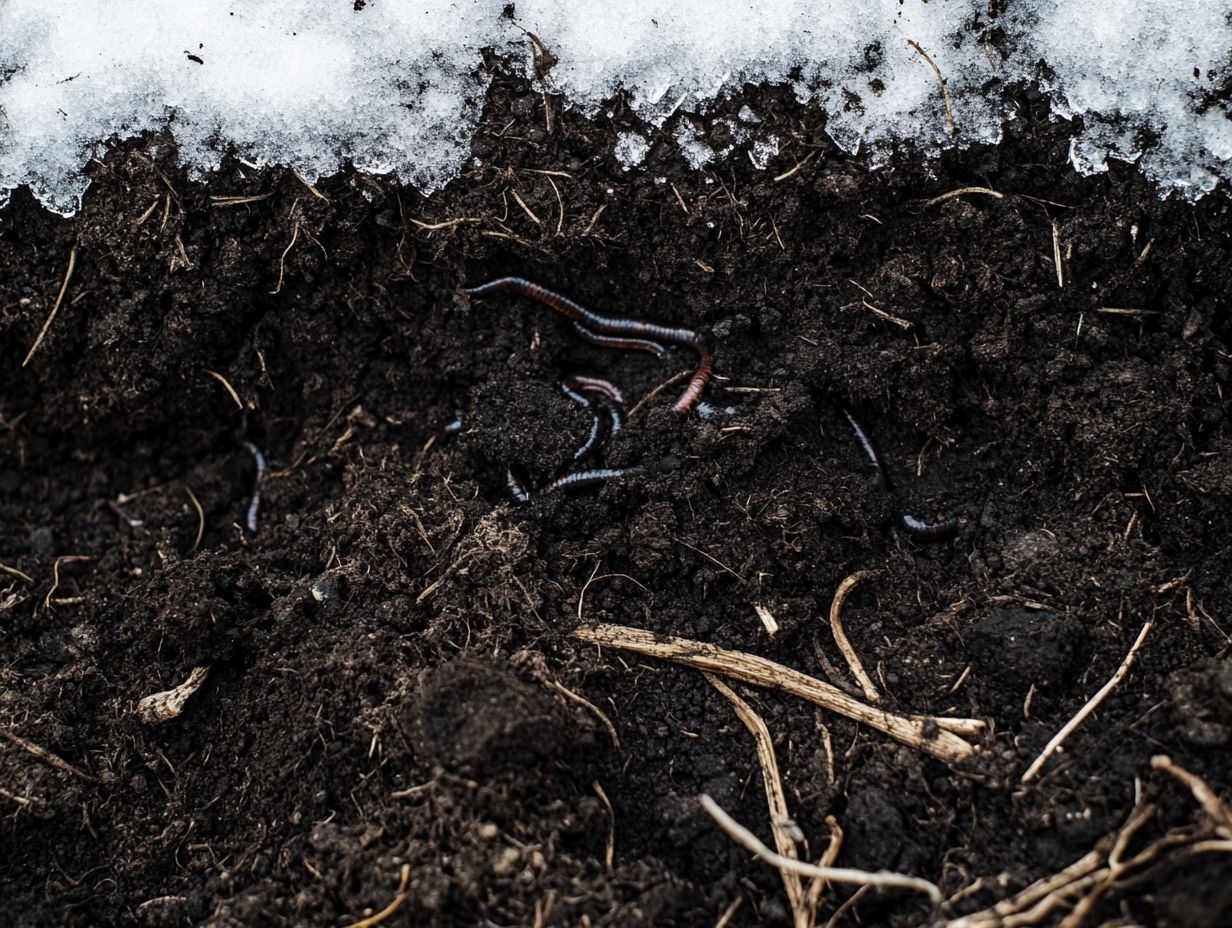
- Soil helps plants grow and thrive.
- Identify and fix soil issues to boost your garden’s health.
- Regularly check your soil for the best results.
The Importance of Soil Structure in Cold-Weather Gardens
Understanding the significance of soil structure in cold-weather gardens is essential for successful gardening, especially when temperatures dip and soil conditions shift. Consider preparing your soil for spring in cold climates to enhance your gardening efforts.
A robust soil structure fosters moisture retention and how nutrients move in the soil, both of which are vital for ensuring that plant roots can thrive and that essential nutrients remain accessible for crop growth.
Effective soil management practices can significantly enhance soil quality, equipping it to better withstand winter gardening challenges. Understanding what is the best soil for cold-climate gardens can help address issues like soil erosion and diminished nutrient availability.
Understanding the Role of Soil in Plant Growth
The role of soil in plant growth is foundational. It provides essential nutrients, support, and a thriving habitat for microorganisms that are vital for healthy development.
This invaluable resource consists of various components, including mineral particles, organic matter, water, and air. Together, they create a rich and intricate structure. The composition of soil can differ remarkably among types, influencing its texture and drainage capabilities.
Nutrient availability is critical; elements like nitrogen, phosphorus, and potassium must be present in adequate amounts to ensure optimal plant health.
Within the soil, a complex network of microorganisms, such as bacteria and fungi, flourishes. They break down organic matter and help with nutrient uptake, enhancing plant growth and resilience. Understanding this dynamic can elevate your gardening game to new heights.
Signs of Poor Soil Structure
Spotting poor soil structure quickly is vital to keeping your garden healthy and productive! Recognizing the signs of poor soil structure is crucial for maintaining soil health and creating the best conditions for plant growth, particularly in home gardens.
Look for indicators such as excessive soil erosion, inadequate moisture retention, and compacted soil. These issues can impede root growth and limit nutrient availability, ultimately compromising the quality and fertility of your soil.
Identifying Common Issues
Identifying common soil issues is crucial for effective soil care and can significantly influence your gardening outcomes. Problems like soil erosion, compaction, and nutrient imbalances can severely impact plant health.
Soil erosion often arises from inadequate ground cover and poor water retention, leading to the loss of fertile topsoil an essential component for successful gardening. Compaction occurs when heavy machinery compresses the soil, restricting root growth and water infiltration. Nutrient imbalances, usually due to over-fertilization or improper crop rotation, can lead to deficiencies that weaken plants’ defenses against pests and diseases.
To tackle these challenges, consider enhancing soil quality by introducing organic matter, using soil amendments like compost, and promoting the growth of beneficial soil microorganisms. These strategies can rejuvenate the soil and restore balance, ultimately promoting a flourishing garden ecosystem.
Start improving your soil today for a thriving winter garden!
Factors Affecting Soil Structure

Several factors influence soil structure, including climate conditions, soil composition, and moisture levels. All of these elements play a vital role in how effectively soil can support plant roots and retain essential nutrients for growth.
Understanding these elements now will help you take immediate action to improve your garden! You can implement tailored soil management practices that suit your specific gardening environment, whether you re working with clay loam or sandy soils.
Climate, Soil Composition, and Other Factors
Climate and soil composition are important in determining soil structure. As temperatures fluctuate and humidity levels vary, they significantly influence how soil behaves and interacts with plant roots.
In regions where high temperatures and low moisture prevail, soil tends to dry out and compact. This makes it challenging for roots to explore and absorb nutrients.
On the flip side, in cooler, wetter climates, soil structure often retains more moisture. This fosters healthier microbial activity, which is crucial for decomposing organic matter.
These variations directly impact the soil’s ability to retain nutrients and manage drainage. By grasping these nuances, you can tailor your approach more effectively whether that means amending your soil with organic matter or adjusting your watering techniques to truly maximize plant health and productivity.
Techniques for Improving Soil Structure
Boosting your soil structure is a game-changer! Implementing techniques to enhance soil structure is crucial for elevating soil health and fertility, especially in your home garden. Consider overcoming soil compaction in cold climates to achieve the best results.
By adopting the right practices, you can significantly boost crop yields and foster robust plant growth. Strategies like utilizing organic amendments, incorporating compost, and planting cover crops can greatly improve soil aeration and nutrient cycling.
These methods will enhance moisture retention and elevate the overall quality of your soil, setting the stage for a thriving garden.
Amending Soil with Organic Matter
Amending your soil with organic matter is among the most effective strategies to elevate its structure and health. This supplies essential nutrients while enhancing moisture retention for optimal plant growth.
You can incorporate various types of organic matter, each bringing unique advantages. For example, compost is packed with nutrients and helps create a healthy environment of soil microorganisms tiny living organisms in the soil that help with nutrient breakdown. Well-processed manure enriches the organic content and boosts nitrogen levels, making it a favored choice for many gardeners.
Peat moss shines in its ability to improve soil aeration and water retention, making it especially beneficial for sandy soils. By blending these amendments together, you can cultivate a balanced environment that nourishes your plants and supports a vibrant microbial community.
Using Cover Crops
Incorporating cover crops into your gardening practices is a powerful strategy for enhancing soil health. These diligent plants work tirelessly to prevent soil erosion, promote nutrient cycling, and improve soil structure.
Not only do they enrich the soil, but they also play a crucial role in moisture retention something you ll truly appreciate during dry spells. When you plant legumes, for instance, they fix nitrogen in the soil, boosting its fertility and reducing your reliance on chemical fertilizers.
Plus, deep-rooted cover crops have the remarkable ability to break up compacted layers in the earth, allowing for better water and air infiltration.
This natural approach to soil management ultimately supports sustainable agricultural practices, leading to healthier crops and a more resilient ecosystem. It s a savvy choice whether you re a small-scale gardener or managing a larger farm.
Implementing No-Till Gardening Methods
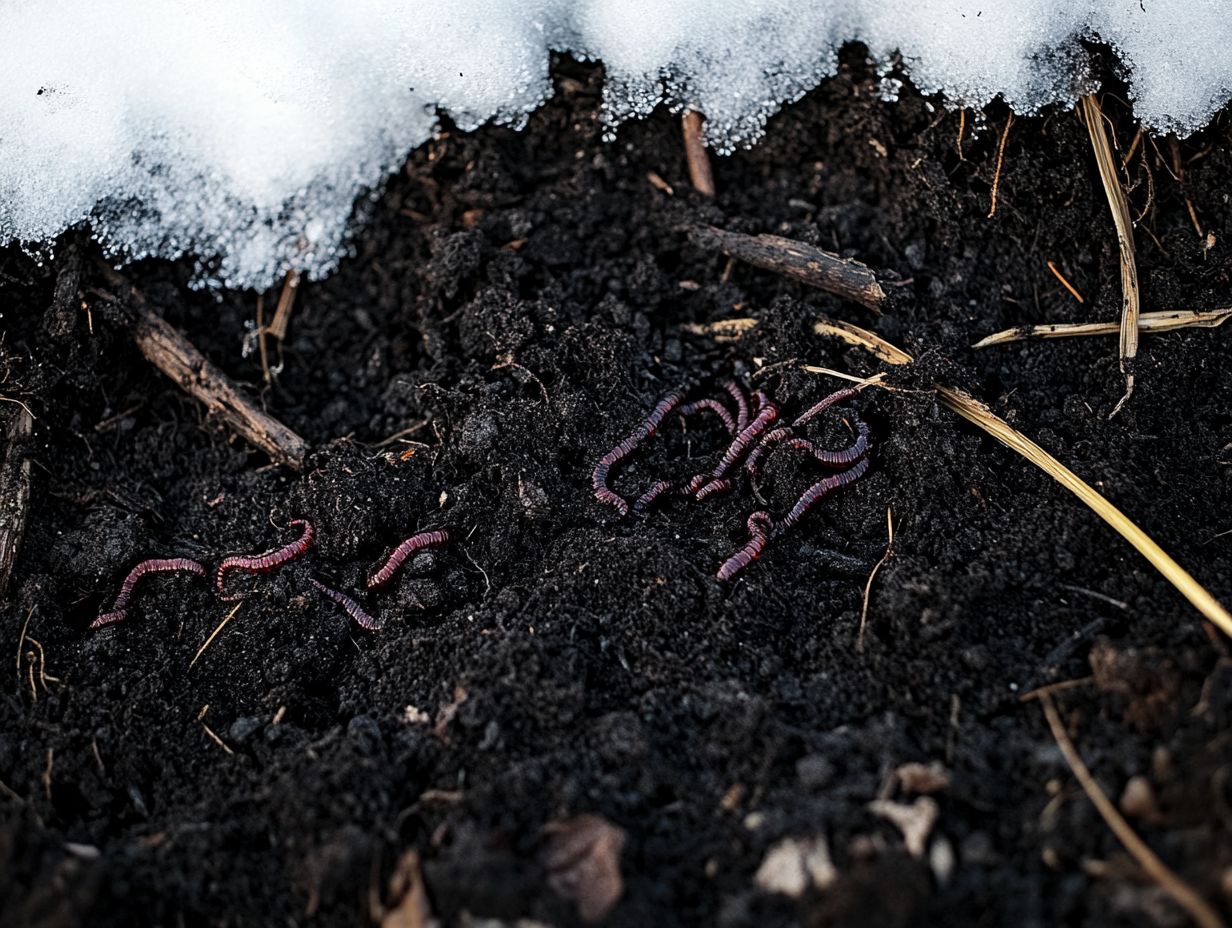
Implementing no-till gardening methods can significantly elevate the health and structure of your soil by reducing compaction and enhancing moisture retention. This ultimately promotes robust growth for your plant roots.
By steering clear of traditional plowing, you allow soil organisms to flourish, cultivating a healthy environment that boosts nutrient cycling and supports plant vitality. Organic matter builds up over time, leading to a more resilient soil structure that improves drainage and aeration.
This method helps reduce erosion and maintain consistent soil temperatures, creating ideal conditions for a host of beneficial microorganisms.
As these essential organisms thrive, they play a pivotal role in breaking down organic matter, making important nutrients easily accessible to your plants. This ensures a healthier, more resilient garden environment that thrives on nature’s best practices.
Best Practices for Maintaining Healthy Soil Structure
Maintaining a healthy soil structure is crucial for achieving optimal plant growth and resilience. By following best practices, including soil preparation for container gardening in cold climates, you can significantly enhance the health and fertility of your home garden.
Engaging in regular soil testing and monitoring, combined with appropriate watering techniques, is vital for ensuring ideal conditions for nutrient retention and overall plant nourishment.
Regular Testing and Maintenance
Testing and caring for your soil is key to a thriving garden! Soil tests give you valuable details about soil makeup and nutrients.
By understanding the critical elements present in your soil, you can make informed decisions that enhance your land’s productivity. When collecting soil samples, use a clean tool to gather samples from various locations within the area being tested. This approach ensures you capture a representative mix.
Once you submit these samples for analysis, the results provide crucial information about pH levels, nutrient cycling, and organic matter content. pH levels, which measure acidity or alkalinity, affect nutrient availability. Armed with this knowledge, you can implement effective soil management practices.
With these insights, you can tailor soil amendments such as fertilizers or lime to address specific deficiencies. This targeted approach ultimately leads to improved crop yields and healthier ecosystems.
Proper Watering and Drainage Techniques
Proper watering and drainage techniques are essential for maintaining healthy soil moisture levels, which are vital for the growth of robust plants and efficient nutrient cycling.
By implementing various watering methods, such as drip irrigation or soaker hoses, you can significantly enhance soil texture while ensuring that moisture penetrates deeply. Appropriate drainage is equally crucial; it prevents waterlogging, which can lead to root rot, a disease caused by excess water that can damage plants, and adversely affect soil health.
When you manage moisture effectively, you encourage beneficial microorganisms and improve nutrient availability, ultimately fostering stronger plant growth.
Maintaining optimal soil moisture levels will influence the overall performance of your crops, facilitating effective nutrient uptake and maximizing yields. Don t wait! Start testing your soil today to ensure vibrant plant growth!
Choosing the Right Plants for Your Soil
Choosing the right plants for your soil is crucial for unlocking their full growth potential and cultivating a thriving garden. Each soil type has its own needs, and selecting the appropriate plants is key to ensuring they flourish.
Understanding the distinct characteristics of various soil conditions is important for both gardeners and farmers. The relationship between soil quality and plant roots plays a significant role in the overall health of your plants. This impacts their ability to absorb nutrients and water effectively.
For example, if you re working with clay soils, which excel at retaining nutrients, you might find that species like willows and cattails thrive there. On the other hand, sandy soils, known for their rapid drainage, are ideal homes for drought-tolerant plants such as sedums or lavender.
By evaluating soil texture, pH levels (a measure of how acidic or alkaline your soil is), and organic matter content, you can make informed decisions. This will enhance your agricultural practices and contribute to maintaining vibrant ecosystems.
Frequently Asked Questions
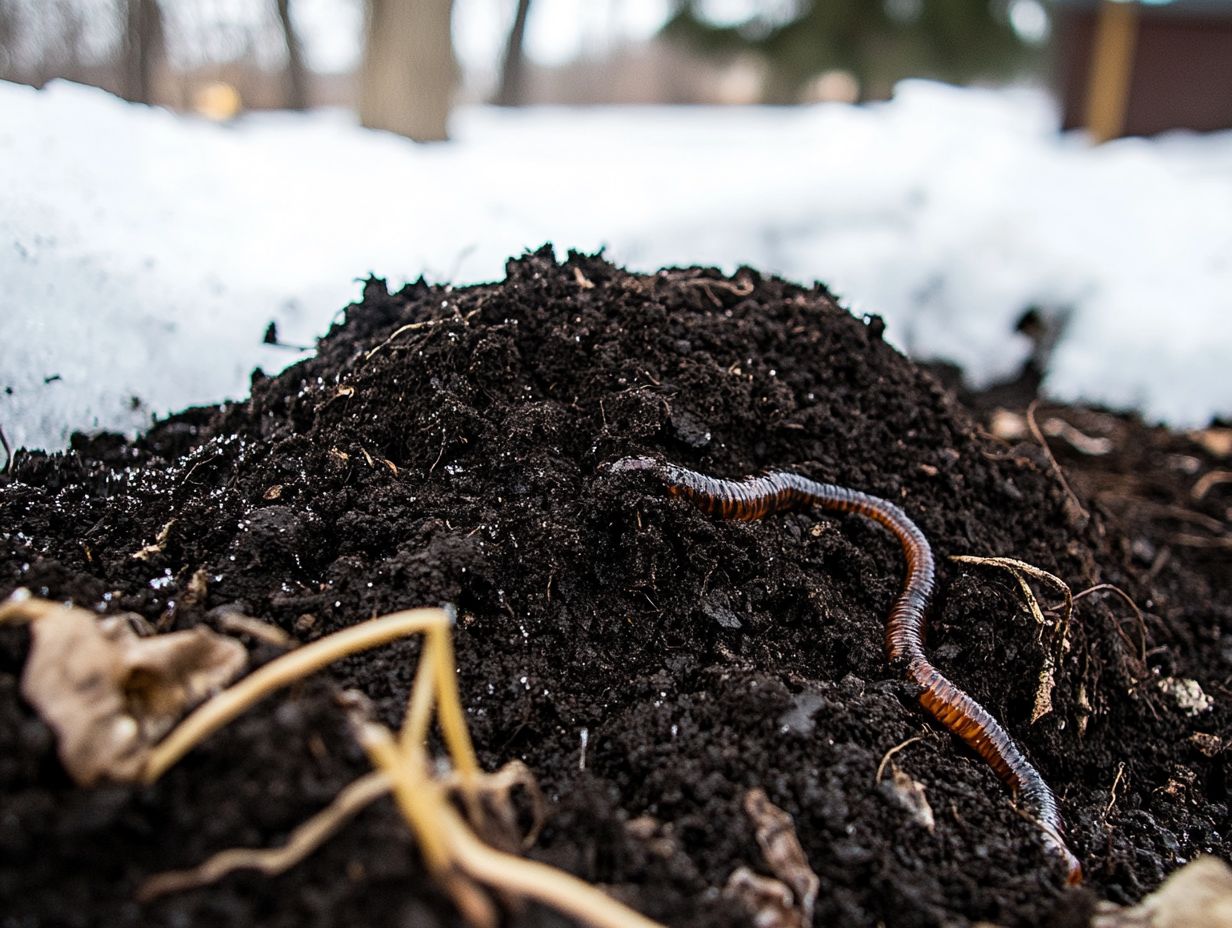
1. What are the benefits of improving soil structure for cold-weather gardens?
Improving soil structure for cold-weather gardens can provide better drainage and increase nutrient availability. For the best results, consider using the top 10 soil amendments for cold-weather gardens. This creates a healthier environment for plants to grow and helps prevent soil erosion and compaction.
2. How can I improve soil structure for my cold-weather garden?
Improve your soil structure today by adding organic matter, such as compost or aged manure, to your soil. This will help enhance its texture and nutrient content, and you can also use natural fertilizers for cold-climate gardens to break up compacted soil.
3. Is it necessary to improve soil structure for a cold-weather garden?
Yes, it is important to improve soil structure for cold-weather gardens. Doing so greatly impacts the health and growth of your plants, as it improves nutrient availability and helps with drainage. For detailed steps, consider preparing soil for cold-weather perennials.
4. Can I use chemicals to improve soil structure instead of organic matter?
While chemical products claim to improve soil structure, they can harm beneficial organisms in the soil. Organic matter is a natural and safe way to enhance soil structure and provide essential nutrients for plant growth.
5. When is the best time to improve soil structure for a cold-weather garden?
The best time to improve soil structure is in the fall. This allows enough time for the organic matter to break down and enrich the soil before planting in the spring. However, you can also focus on keeping your soil healthy in winter at any time during the growing season.
6. How long does it take to see the results of improved soil structure?
The time it takes to see results from improved soil structure can vary depending on the existing soil condition and the amount of organic matter added. You should start to see improvements within a few months, but it may take a full growing season to see significant changes.
Start evaluating your soil today for a better garden outcome!

